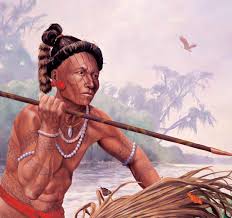The Tocobaga and their neighbors disappeared from the historical record by the early 1700s, as diseases brought by European explorers decimated the local population and survivors were displaced by the raids and incursions of other indigenous groups from the north. The Tampa Bay area was virtually uninhabited for over a century. The name "Tocobaga" is often applied to all of the native peoples of the immediate Tampa Bay area during the first Spanish colonial period (1513-1763). While they were culturally very similar, most of the villages on the eastern and southern shores of Tampa Bay were likely affiliated with other chiefdoms, such as the Pohoy, Uzita, and Mocoso. Study of archaeological artifacts has provided insight into the everyday life of the Safety Harbor culture. However, little is known about the political organization of the early peoples of the Tampa Bay area. The scant historical records come exclusively from the journals and other documents made by members of several Spanish expeditions that traversed the area in the 1500s.
Tocabaga People of Tampa Bay
